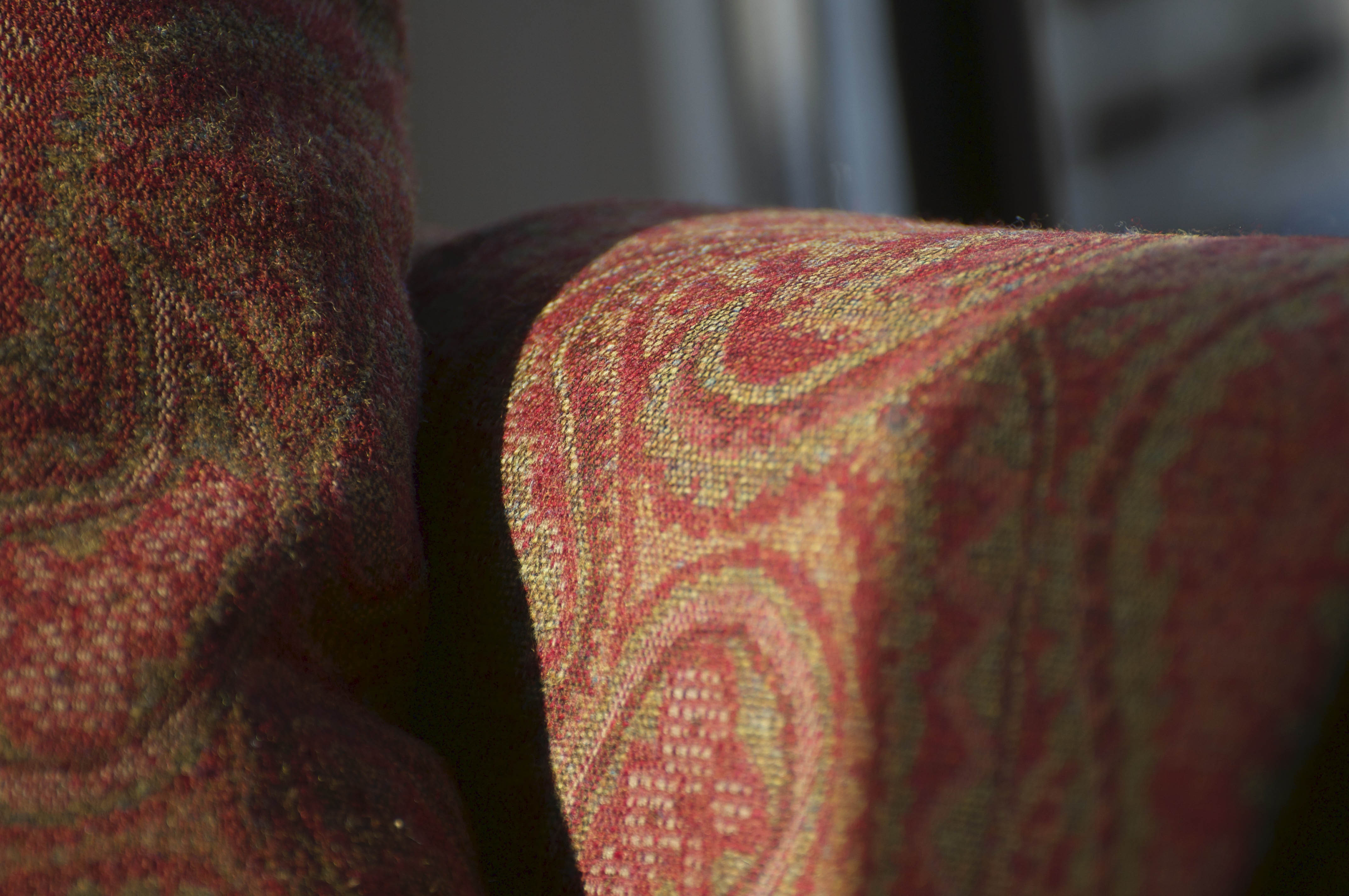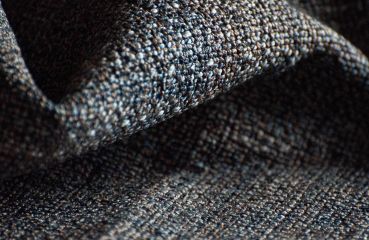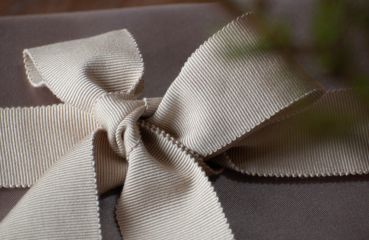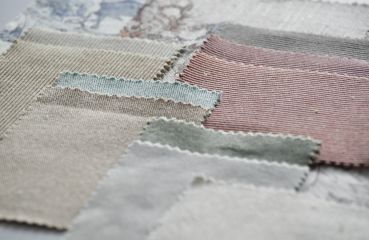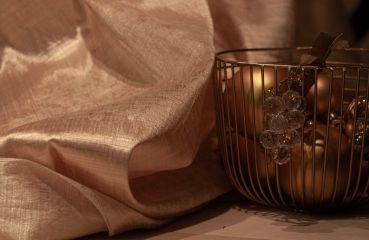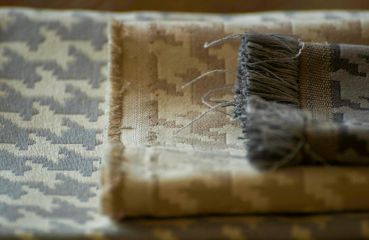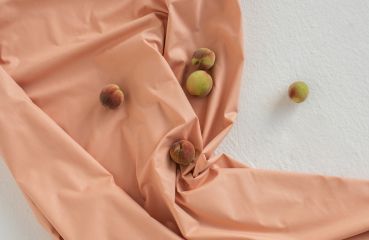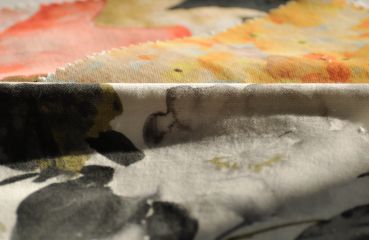About the most popular fabric patterns – part TWO, HOUNDSTOOTH AND PAISLEY
Pied-de-Poule, houndstooth, chicken's foot, or simply pepita

It has several patterns, many names and an interesting history. Tilted plaid, houndstooth or chicken's foot. The term pepita, which is used only in Poland, derives from a Spanish word pepita, meaning seeds. “Houndstooth”, on the other hand, is a term commonly used in English-speaking countries. In the homeland of fashion, France, the houndstooth is referred to as Pied-de-Poule, literally meaning a hen's foot.
The most famous pattern in the history of fashion, originally associated with Scotland, was taken up and popularized by Coco Chanel. It has found its place in our interiors and has embellished furniture, cushions, lampshades and tablecloths for years.
Tessellation (or tiling) means covering a surface with adjacent and non-overlapping polygons, creating a geometric, optically active pattern. In the aforementioned houndstooth, these polygons are associated with dog's teeth by some people and with a chicken's footprints by others. They are always contrasted with each other; traditionally and originally they were black and white, and today come in numerous colour variants.
The history of the houndstooth goes back to the 3rd century, when textiles with a contrasting, skewed checked pattern were made in today's Scandinavia. However, the shape that most closely resembles the present houndstooth dates back to the 17th century, when it appeared on Scottish woollen tweed rugs, which were used as outer garments or to carry lambs by shepherds.
Houndstooth clothing slowly began to appear among the common people, and in the 19th century also among representatives of the upper class. However, it was still informal. It was the Prince of Wales who popularized and consciously used the houndstooth pattern. He referred to national traditions by wearing tweed chequered suits. Today, this kind of outfit is one of the main distinguishing features of the British style.
The worldwide popularity of the houndstooth began in the 1920s thanks to Coco Chanel. From then on, the pattern began to be associated with luxury and exceptional elegance. The houndstooth has become not only a textile pattern, but also a universal graphic symbol, often used to raise the status of advertised products.
In the 1960s, American designers decided to take a bold step and add colour to the houndstooth. The combination of muted black, lavender, bottle green and caramel was an important moment in the history of fashion. The reinterpretation of the classic pattern offers future generations endless possibilities to use it in design.
An interesting variation of the houndstooth is a shepherd's check – an old British pattern, available in various colours. The pattern was originally used in folk fabrics, then appeared on traditional tweed clothes, and today it is also successfully applied to upholstery and decorative fabrics. It is a traditional checked pattern on a houndstooth background.
A fabric in tears, that is paisley
The characteristic kidney-shaped pattern, used for centuries in the decoration of fabrics, was named after a Scottish town of Paisley, with as many as 23 factories, which around the 18th century started producing cashmere-like fabrics with a teardrop pattern. In Poland, it is sometimes mistakenly called the Turkish pattern. In fact, it was first introduced in Europe on wonderfully decorated Kashmir shawls brought by the British. Its actual name is botha and it was created two thousand years BC in India, where it was used to decorate the insignia of power, buildings, and later also the clothing of regular people.
In Poland, it is commonly referred to as a kidney pattern. Scholars do not agree on what exactly it represents. Some claim it is a mango fruit, some say it is an almond, and others mention a fruit stone. In Ancient Iran, it was mainly used to decorate fabrics, in Azerbaijan – houses.
A characteristic element of the pattern is the shape of a tear curled at the narrow end. In the case of original scarves from Kashmir, the pattern is symmetrically and evenly arranged in rows facing one direction. Over time, Paisley weavers began to create different versions of the ornament and characteristic “kidneys” were scattered all over the fabric. Small and larger ones were loosely combined with floral motifs. They were no longer as colourful as the Kashmiri originals, and the centre of the main pattern was often filled with smaller “tears”, creating a peacock feather effect.
It was members of the royal families who popularized the pattern among the upper classes of the societies of France and England by simply wearing garments decorated with paisley. Over time, it started to appear on folk costumes. Paisley scarves were also worn by women in the United States during the Civil War. In the 1960s and 1970s, the pattern gained popularity among the representatives of the hippie culture. In the men's fashion, it has appeared on ties, bow ties and pocket squares, and customers of tailoring studios often choose “teardrop” fabrics for the linings of their jackets.
To this day, the paisley pattern is used to decorate fabrics, wallpapers, and interior design elements – it is a popular motif among those who seek a bit of oriental styling.
Fabrics from the Dekoma collection included in the session:
Founded in 1837, Abraham Moon & Sons is one of the last remaining vertical woollen mills in Great Britain. It is a family-run business with headquarters located in Guiseley, northern England.
With roots in apparel, over time the company became the supplier of high-end woollen products for some of the world’s most prestigious fashion houses. Following the success of their fashion fabrics, Abraham Moon launched their first furnishing and decoration collection at the beginning of the 21st century.
Dekoma has become the exclusive distributor of the company’s interior range in Poland.
PEDRO
Fabric in small dog-tooth. Classic design enlivens with the range of six interesting colours. Extremely high resistance to abrasion (70,000 cycles), fabric recommended for public and home interiors. Trends 2015: Mixology.
LORA
Fabric in distinct dog-tooth on a creamy backing, available in four toned colour combinations. Its undoubted advantage is the economic height of 300 cm, it is suitable for decorative and upholstery use.
Photo-session for Dekoma.
Content, creative idea, photos and styling: MBBM Studio.











